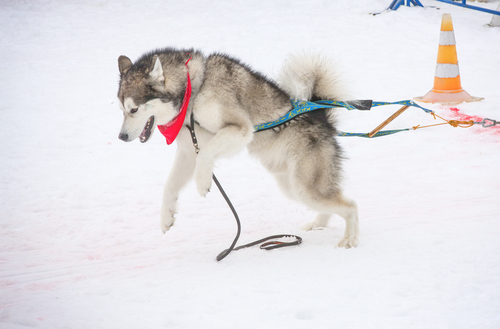
Weight pulling. According to the owners of dogs who like it, their dogs love it, and any breed of any size can play.
In this sport, a dog pulls a cart or sled loaded with weight a short distance across concrete, dirt or gravel, grass, carpeting, or snow.
- Sleds are pulled on natural or artificial snow and must be able to carry a minimum of 3,000 pounds;
- Double-axel wheeled carts are pulled on carpet and must be able to carry at least 5,000 pounds;
- Rail carts are pulled along a rail system and must be able to carry at least 6,000 pounds (the dogs’ path is carpeted so they can achieve traction when pulling).
The dog is hitched to the cart or sled with a specially constructed harness designed to spread the weight and minimize the chance of injury (a quality harness is hugely important).
For each timed round, the weight-pulling dog must drag their load a total of 16 feet down a track. The dog who manages to pull their load the required distance in the fastest time wins. The dog’s owner or handler makes no physical contact with their dog during the rounds, but they do stand in front of their dog to coach him or her forward.
The American Pulling Dogs Association says that many behavioral issues are tempered with weight pulling. The cost of the sport is minimal, training isn’t difficult, and the dogs are mentally, and certainly physically, challenged. The International Weight Pull Association, a non-profit association that promotes the sport through organized, sanctioned events, has as its mandate the promotion of the working heritage of all dogs.
It all sounds good, so what could be the problem? The sport has its critics in some veterinarians and PETA who take issue with training methods, and overzealous owners who over do things, but proponents point out that weight pull for dogs like weight lifting for people. One doesn’t just throw a dog into the sport without training or conditioning, and as in human weight lifting, a dog works his or her way up in weight. Some breeds that are natural freighters like to pull because its in their genes; others love the challenge.
We’d like to hear from any of you who’ve participated in the sport with your dog. What say you?
